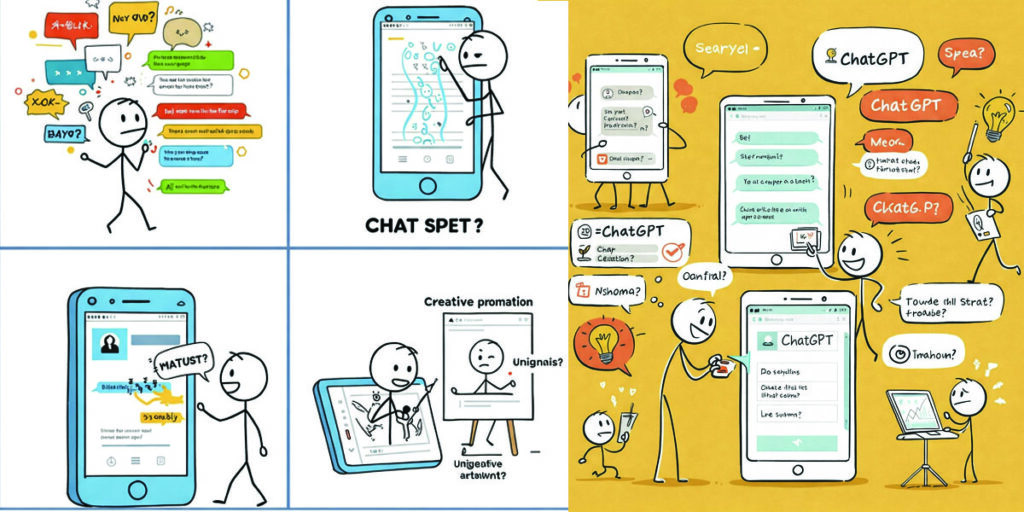AI tool for paraphrasing, grammar checking, and summarizing text.
QuillBot has rapidly established itself as a prominent player in the burgeoning landscape of AI-powered writing assistance tools. From its inception to its current widespread adoption, QuillBot’s journey reflects the increasing demand for efficient and effective solutions for paraphrasing, grammar checking, and summarizing text. Understanding its history, its position within the economic market, and its impact on networking and communication provides valuable insights into the evolution of AI in the realm of language processing.
A Genesis Rooted in Academic Needs:
The story of QuillBot begins in 2017, conceived by Rohan Gupta, Anil Jason, and David Silin at the University of Illinois Urbana-Champaign. The initial motivation stemmed from the founders’ own frustrations with the time-consuming and often tedious tasks associated with academic writing. Students and researchers frequently need to rephrase existing text to avoid plagiarism, refine their grammar and style, and condense lengthy documents for better comprehension and dissemination. Existing tools at the time often fell short, lacking the sophistication and nuance required for these tasks.
The founders recognized the potential of advancements in Natural Language Processing (NLP) and machine learning to address these challenges. Their vision was to create an AI-powered tool that could go beyond simple word-for-word substitutions in paraphrasing and offer intelligent suggestions for improving clarity, conciseness, and overall writing quality.
The early development of QuillBot focused on building robust algorithms for paraphrasing. Unlike basic thesaurus-based tools, QuillBot aimed to understand the context and meaning of the input text, allowing it to generate semantically equivalent but structurally different outputs. This involved training sophisticated machine learning models on vast datasets of text, enabling the tool to identify synonyms, reorder phrases, and even rewrite entire sentences while preserving the original intent.
Early Growth and Feature Expansion:
Following its initial launch, QuillBot quickly gained traction, particularly among students and academics. Its intuitive interface and the quality of its paraphrasing capabilities set it apart from existing alternatives. The positive word-of-mouth and organic adoption highlighted the genuine need for such a tool.
Building on this early success, the developers focused on expanding QuillBot’s feature set. Recognizing that paraphrasing was just one aspect of the writing process, they introduced grammar and spell-checking functionalities. These features were designed to be more intelligent than traditional grammar checkers, identifying not only basic errors but also offering suggestions for improving sentence structure, clarity, and style.
The summarizer tool was another significant addition, addressing the need for quickly condensing large amounts of text into concise summaries. This feature leveraged NLP techniques to identify key information and generate coherent and informative summaries, saving users significant time and effort in information extraction.
Over time, QuillBot continued to refine its algorithms and user interface based on user feedback and advancements in AI research. The introduction of different paraphrasing modes (such as Standard, Fluency, Formal, Simple, Creative, and Shorten) provided users with greater control over the output, allowing them to tailor the paraphrased text to specific contexts and purposes. The integration with popular writing platforms and web browsers further enhanced its accessibility and usability.
The Economic Market for AI Writing Assistants:
QuillBot operates within a rapidly expanding economic market for AI-powered writing assistants. This market is driven by several key factors:
- Increasing Demand for Content: The digital age has witnessed an explosion in the creation and consumption of written content across various domains, including marketing, education, journalism, and general communication. This demand necessitates efficient tools for content creation and refinement.
- Emphasis on Clarity and Conciseness: In an information-saturated world, clear and concise communication is paramount. AI writing assistants help users achieve this by improving grammar, style, and overall readability.
- Combating Plagiarism: Academic institutions and content platforms place a strong emphasis on originality. Paraphrasing tools like QuillBot assist users in rephrasing text effectively to avoid unintentional plagiarism.
- Time Efficiency: Writing, editing, and summarizing can be time-consuming tasks. AI tools offer significant time savings, allowing users to focus on other aspects of their work.
- Advancements in AI and NLP: The rapid progress in artificial intelligence and natural language processing has made it possible to develop sophisticated tools that can understand and manipulate text with increasing accuracy and nuance.
Within this market, QuillBot has positioned itself as a leading provider by offering a comprehensive suite of features at a competitive price point. Its freemium model, offering basic functionalities for free and more advanced features through a subscription, has contributed to its widespread adoption.
Competitive Landscape:
The market for AI writing assistants is becoming increasingly competitive, with several players offering similar functionalities. Some of the key competitors include:
- Grammarly: Primarily known for its advanced grammar and style checking capabilities, Grammarly also offers some paraphrasing features.
- Wordtune: Focuses heavily on rephrasing and sentence rewriting, offering various stylistic options.
- Rytr and Jasper (formerly Jarvis): Primarily AI content generation tools, they also include paraphrasing and summarization features.
- Spinbot and other basic paraphrasing tools: Offer simpler paraphrasing functionalities, often relying on basic synonym replacement.
QuillBot differentiates itself through its strong focus on paraphrasing quality, the variety of its paraphrasing modes, and its integrated suite of grammar checking and summarization tools. Its user-friendly interface and competitive pricing also contribute to its appeal.
Economic Impact and Business Model:
QuillBot’s economic impact can be analyzed from several perspectives:
- Direct Revenue Generation: QuillBot operates primarily on a subscription-based model, generating revenue from users who opt for its premium features. This recurring revenue stream allows for continued investment in research and development, further improving the tool’s capabilities.
- Job Creation: The company itself employs individuals in various roles, including software development, AI research, marketing, customer support, and business operations, contributing to job creation in the technology sector.
- Increased Productivity for Users: By automating and streamlining tasks such as paraphrasing, grammar checking, and summarizing, QuillBot enhances the productivity of its users across various fields. This increased efficiency can translate to economic benefits for individuals and organizations. For instance, researchers can disseminate their findings more efficiently, marketers can create compelling content faster, and students can improve their writing quality and save time on assignments.
- Support for Content Creators: In the burgeoning creator economy, tools like QuillBot empower individuals to produce high-quality written content more efficiently, potentially leading to increased income and opportunities.
- Impact on the Education Sector: QuillBot plays a significant role in the education sector by assisting students with their writing and helping them understand the importance of original content. While concerns about potential misuse for plagiarism exist, the tool can also be used as a learning aid to understand different ways of expressing the same ideas.
Networking and Communication Impact:
QuillBot’s influence extends beyond individual productivity and has a notable impact on networking and communication in several ways:
- Facilitating Clearer Communication: By improving grammar, style, and conciseness, QuillBot helps users communicate their ideas more effectively. Clear and well-written communication is crucial for successful networking, collaboration, and information exchange in professional and academic settings.
- Enhancing Cross-Cultural Communication: When communicating across different linguistic backgrounds, ensuring clarity and avoiding ambiguity is paramount. QuillBot can assist non-native English speakers in refining their writing, making their communication more easily understood by a wider audience.
- Streamlining Information Sharing: The summarization feature enables users to quickly condense large amounts of information, making it easier to share key insights and findings with their networks. This is particularly valuable in professional settings where time is often limited.
- Improving Professional Presence: High-quality written communication is essential for building a strong professional presence. Whether it’s crafting emails, writing reports, or engaging on professional networking platforms, using tools like QuillBot can help individuals present themselves more effectively.
- Supporting Collaborative Writing: In collaborative writing projects, ensuring consistency in style and tone is important. QuillBot can help team members refine their contributions to maintain a cohesive and professional output.
- Combating Misinformation: By helping users understand the original source material through effective summarization and encouraging proper paraphrasing with attribution, QuillBot can indirectly contribute to more responsible information sharing and potentially mitigate the spread of misinformation. However, it’s crucial to emphasize that the ethical use of such tools remains the responsibility of the user.
Ethical Considerations and Challenges:
While QuillBot offers numerous benefits, it also raises certain ethical considerations and challenges:
- Potential for Misuse in Academic Dishonesty: The paraphrasing capabilities could be misused by students to avoid plagiarism without truly understanding the source material. Educational institutions need to adapt their assessment methods and educate students on the ethical use of such tools.
- Over-Reliance and Deskilling: There is a concern that over-reliance on AI writing assistants might lead to a decline in users’ own writing skills over time. It’s important for users to view these tools as aids rather than replacements for their own abilities.
- Bias in AI Algorithms: Like all AI models, QuillBot’s algorithms are trained on large datasets of text, which may contain inherent biases. This could potentially lead to biased outputs in paraphrasing or summarization. Ongoing efforts in AI research aim to mitigate these biases.
- Data Privacy and Security: As users input text into the platform, concerns about data privacy and security arise. QuillBot and other similar services must ensure robust data protection measures.
- Defining Originality in the Age of AI: The increasing use of AI in writing raises fundamental questions about the definition of originality and authorship. These are complex issues that require ongoing discussion and the development of appropriate guidelines.
The Future of QuillBot and AI Writing Assistance:
The future of QuillBot and the broader field of AI writing assistance is likely to be characterized by continued innovation and integration. We can expect to see:
- More Sophisticated NLP Algorithms: AI models will become even better at understanding context, nuance, and intent, leading to more natural and accurate paraphrasing, grammar checking, and summarization.
- Enhanced Personalization: AI writing assistants may become more personalized, adapting to individual writing styles and preferences.
- Integration with More Platforms: Seamless integration with a wider range of applications and workflows will further enhance usability.
- Multilingual Capabilities: Expanding support for more languages will broaden the reach and impact of these tools.
- AI-Powered Content Generation: While QuillBot currently focuses on refining existing text, future iterations might incorporate more advanced content generation capabilities.
- Focus on Ethical Use and Education: Developers and educational institutions will likely place greater emphasis on promoting the ethical and responsible use of AI writing tools.
Conclusion:
QuillBot’s journey from a university project to a widely adopted AI writing assistant reflects the growing importance of AI in addressing the challenges of effective communication. Its history is marked by a continuous focus on user needs and technological innovation. Economically, QuillBot operates within a dynamic and expanding market, offering a valuable service that enhances productivity and supports content creation. In terms of networking and communication, it plays a significant role in facilitating clearer, more concise, and impactful information exchange. While ethical considerations and challenges remain, the future of QuillBot and similar tools holds immense potential for transforming the way we write and communicate in an increasingly digital world. By understanding its history, market position, and networking impact, we can better appreciate the evolving relationship between humans and artificial intelligence in the realm of language.




















